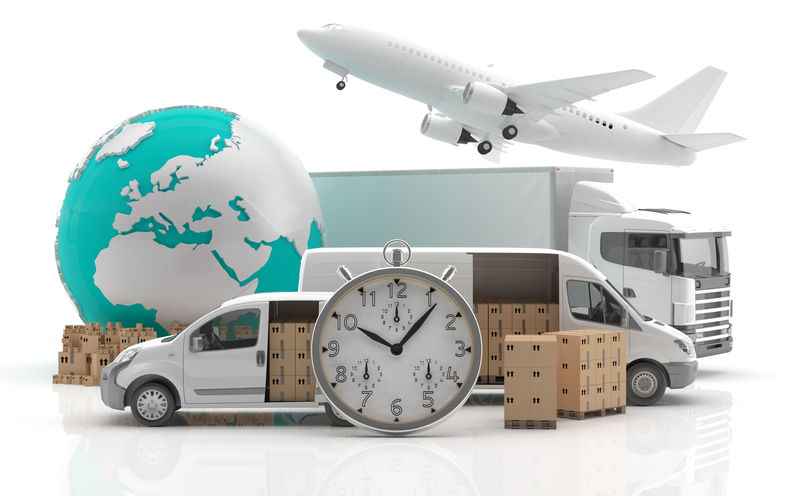Simplify the moving process with professional packing tips
Posted on 21/05/2025
Simplify the Moving Process with Professional Packing Tips
Moving can be an exciting new chapter in life, but it's often accompanied by a whirlwind of stress and chaos. From sorting through years of belongings to packing fragile items securely, the entire process can feel overwhelming. Professional packers have perfected techniques to streamline the experience and minimize hassle. In this comprehensive guide, we'll unveil the secrets to simplifying your move using expert-level packing tips that save time, protect your belongings, and reduce anxiety.

Why Proper Packing Is Essential for a Successful Move
Good packing sets the tone for your entire move: it safeguards your possessions, fosters organization, and makes unpacking a breeze. Implementing professional packing strategies helps avoid common mishaps like broken items, scattered boxes, or misplaced essentials -- ensuring a smoother transition to your new space.
- Protection: Securely packed items arrive intact.
- Efficiency: Well-labeled, methodically packed boxes make loading, unloading, and unpacking faster.
- Stress Reduction: Planning and organizing minimize last-minute rush and confusion.
The True Cost of Poor Packing
Packing haphazardly often leads to lost, damaged, or even stolen items during the move. Investing time and care up front prevents costly replacements and gives you peace of mind throughout the process.
Planning: The Key to Simplifying the Moving Process
Professional packers never dive in without a plan. To streamline your move from the start, follow these pre-packing steps:
- Start Early: Give yourself at least 4-6 weeks before the move to pack gradually.
- Declutter Ruthlessly: Sort belongings and donate, sell, or dispose of items you no longer need.
- Create an Inventory: List your possessions and group by category or room.
- Gather Supplies: Ensure you have sturdy boxes, tape, markers, bubble wrap, and packing paper.
- Designate a Packing Station: Set up a clear workspace for sorting and packing items.
Essential Moving Supplies for Efficient Packing
Having the right materials is vital for organized, protective packing. Invest in the following essentials:
- Sturdy boxes (various sizes): Use small boxes for heavy items and large boxes for lighter objects.
- Packing tape: Reinforce all box bottoms and seams.
- Bubble wrap and packing paper: Shield delicate items from shock.
- Stretch wrap: Contain loose objects and protect furniture surfaces.
- Labels and permanent markers: Keep track of box contents and designated rooms.
- Furniture covers and mattress bags: Guard against dust, dirt, and tears.
Tip: Don't use newspaper for fragile items -- ink can transfer and cause stains.
Room-by-Room Packing Strategies
Approach your move systematically by tackling one area at a time. Here's how professionals recommend packing the most challenging spaces:
Kitchen
- Use dish packs: These divided boxes protect plates and glassware.
- Wrap each item individually: Place bubble wrap or paper between each dish.
- Bundle silverware: Tie together and wrap in kitchen towels.
- Seal opened containers: Use plastic wrap under lids to prevent leaks.
- Purge expired pantry items: Lighten your load and avoid spills.
Living Room
- Disassemble furniture: Remove legs, arms, and cushions. Bag screws and tape to the frame.
- Use stretch wrap: Protect upholstery and prevent shifting in transit.
- Pack electronics in original boxes: If unavailable, cushion well and remove batteries, discs, or cords.
- Label cords and remotes: Use zip bags and tape them to the correct devices.
Bedrooms and Closets
- Sort clothing: Donate or discard items you no longer wear.
- Use wardrobe boxes: Hang clothes to avoid wrinkles and save time unpacking.
- Pack linens in suitcases: Utilize soft items to cushion fragile pieces.
- Protect mattresses and pillows: Use specialty bags or thick plastic covers.
Bathrooms
- Seal open containers tightly: Prevent leaks with plastic wrap under caps.
- Sort and purge: Toss expired or unused products before packing.
- Pack essentials separately: Assemble a first-night box with toiletries and medications.
Expert Packing Techniques to Simplify Your Move
Mastering professional packing techniques can make all the difference. Here's how to pack efficiently and protect your belongings:
Heavies Go Low -- Light Items on Top
Always pack heavier items at the bottom of boxes and lighter ones on top to avoid crushing and instability during transit.
Don't Overfill Boxes
Boxes should be full enough to prevent contents from shifting but not so heavy that they become hard to carry or prone to splitting. As a rule of thumb, boxes should weigh no more than 50 lbs.
Use Padding
- Fill empty spaces: Cushion gaps with towels, clothing, or packing paper to prevent movement.
- Wrap fragile items individually: Double-wrap glass, ceramics, and collectibles for extra protection.
Label Every Box Clearly
Write the destination room and a brief description of the contents on each box. For especially valuable or delicate items, add "FRAGILE" and arrows showing the upright direction. Use color-coded labels or tape to simplify sorting on moving day.
Keep Essentials Handy
- Pack a personal bag: Include your wallet, keys, phone, charger, medications, and a change of clothes.
- Prepare an "open-first" box: Add daily-use items you'll need immediately at your new home (toiletries, important documents, snacks, and basic cleaning supplies).
Packing Tips for Special Items
Artwork and Mirrors
- Use custom boxes: Specially-sized cartons offer the best protection.
- Cushion corners: Add cardboard or foam to safeguard vulnerable edges.
- Wrap in paper and bubble wrap: Securely tape and mark with "Fragile - Glass."
Books and Documents
- Use small boxes: Paper is heavy; spreading loads avoids injuries and box failures.
- Pack flat or spine-down: Prevents warping and page bends.
- Keep vital documents with you: Transport passports, birth certificates, legal papers, and financial records personally.
Plants
- Water beforehand: Moisten a day before moving but don't overdo it to avoid leaking.
- Protect pots with plastic bags: Prevents soil spillages.
- Pack upright: Use open boxes and support stems if necessary.
Moving Day: Keeping Your Process Smooth and Simple
On the day of your move, a little preparation goes a long way:
- Double-check each room: Walk through to ensure nothing's left behind.
- Stage all boxes in an accessible area: Neatly arrange boxes near the door to speed up loading.
- Protect floors: Lay down old sheets, towels, or cardboard where movers will walk.
- Communicate clearly: Mark items requiring special handling and inform the moving team.
- Supervise loading: Watch that fragile and heavy items are securely stowed.
Should You Hire Professional Packers?
Hiring professionals can be a true move-simplifying solution for those short on time, facing a major transition, or overseeing large households. Here's why:
- Speed: Experienced crews can pack an average home in a few hours.
- Expertise: Your valuables are packed using proven, safe techniques.
- Convenience: Reduces your workload and stress, letting you focus on the bigger picture.
Pro tip: You can also opt for partial packing services for specialty or fragile items if you want to save money but still benefit from expert handling.

After the Move: Unpacking Made Simple
Unpacking doesn't have to be daunting. Use your organizational head start to make settling in seamless:
- Place boxes in their designated rooms: Unpack essentials first and tackle one room at a time.
- Recycle packing materials: Break down cardboard and responsibly dispose of it.
- Check inventory: Verify that all boxes and pieces arrive unscathed.
- Assemble furniture: Refer to your hardware bags and labels for quick reassembly.
- Take breaks: Don't overwhelm yourself -- slow, consistent progress wins the day.
Final Thoughts: Move with Confidence
Simplifying the moving process is all about preparation, organization, and using professional packing tips that make a measurable difference. Whether you hire expert help or handle packing yourself, these strategies eliminate unnecessary headaches and help ensure your belongings arrive safely at their new home. With the right supplies, planning, and techniques, you can say goodbye to moving stress -- and hello to a fresh start!
Make your move simple, efficient, and worry-free by embracing the wisdom of professionals. Happy moving!










